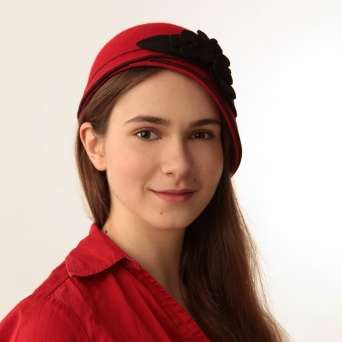Mozart’s last opera seria, La clemenza di Tito, was neglected by scholars and directors alike for decades before finally beginning to be discussed and performed semi-regularly in the 1980s. Its rise back into the standard repertoire has been slow but steady, with the last decade seeing a slew of innovative productions. Jan Bosse’s staging for the Bayerische Staatsoper is far from perfect, but its bold approach to gender, arresting visuals and effective storytelling form a thought-provoking and engaging whole.
The plot is set in ancient Rome, where the power-hungry princess Vitellia seduces her lover Sesto into staging a coup and assassinating the emperor Tito. Don’t search too hard for traces of Rome in this production, though: while Stéphane Laimé’s set includes columns and tiered seating, it is more a continuation of the National Theater’s own décor (including the reliefs on the boxes) than an imitation of history. Victoria Behr’s costumes don’t belong to any particular historical period, either: Sesto’s 80s power suit shares the stage with Vitellia’s monstrously large hoop skirt.
I sometimes found myself wondering whether the world of Bosse’s Tito is in the future rather than the past. It’s certainly a world of atypical morphological experimentation. Colourful wigs come on and off; moustaches and eyebrows get drawn and erased; and clothing choices seem relatively un-gendered. But these choices, while fascinating in their own right, are only a backdrop. Although it is occasionally threatened by incongruous lighting effects and distracting projections of the singers’ faces, for the most part, the storytelling takes centre stage.
A cast full of talented singer-actors makes this story worth watching. As Vitellia, Kristine Opolais is imperious, ruthless, and energetic. Her Vitellia is always performing (even when her only audience is the basset horn soloist, as during her devastatingly perfect “Non più di fiori”), but she performs with such charisma that you want to believe her. Opolais occasionally pushes sharp vocally, especially during the first act, but I got the sense that it is simply from injecting so much enthusiasm into her words.
Angela Brower plays Sesto’s range of emotions with poignant genuineness. She progresses believably from the dazed, lovesick puppy who crawls under Vitellia’s skirts during “Deh, se piacer mi vuoi” to the tormented traitor who appears bound, thirsty, and abused in Act II. Her voice reveals an impressive array of colours and textures, and she throws off the triplets in “Parto, parto” with enviable ease (matched admirably by clarinet soloist Markus Schön). She also makes novel and sensitive ornamentation choices, particularly in “Deh, per questo istante solo”.
As Tito, Daniel Behle displays a voice of extraordinary flexibility but limited power. His character is nuanced rather than strictly good, and he has moments of surprising cruelty in his interview with Sesto. While this makes his character more interesting, particularly during his decision-making soliloquies, it also makes it difficult to believe he could be so oblivious to Publio’s blatant hunger for power. Tareq Nazmi clearly has fun portraying Publio as a gleefully evil conspirator, although the role gives him few opportunities to use his strong bass-baritone.
Serena Malfi’s adorable Annio is full of strong passions and convictions, and her two short arias left me wanting to hear more. (I also wanted to see more – her long pink wig too often concealed her facial expressions.) Hanna-Elisabeth Müller shows off a powerful and clear soprano as Servilia, especially during “S’altro che lagrime”.
That accounts for all six principal singers, but this production includes a seventh character: the orchestra, which interacts with the other characters and reacts to the opera’s events. When Vitellia refuses to glance at Sesto during “Parto, parto”, Sesto accepts a look from the clarinetist instead. After the fire at the end of Act I, the orchestra abandons the pit. Annio must lead in the harpsichordist in order to begin Act II and wait for other instrumentalists to arrive before singing her first aria. (They take a long time to file in noisily while Sesto and Annio stand in the pit awkwardly, after which Sesto exasperatedly asks Annio, “Ebben, che vuoi?!”—“Well, what do you want?!”) When they haven’t been scared away by the events of the plot, the Bayerische Staatsorchester is in top form. Under Oksana Lyniv’s very enthusiastically wielded baton, the musicians sound well-balanced with both each other and the singers, and the music is perfectly paced to match the drama.
On the whole, Bosse’s brave production is sometimes distracting but usually facilitates effective storytelling. Together, a talented cast, a great orchestra led by a skilled conductor, and a thought-provoking staging make for a wonderful evening of both emotionally and intellectually compelling opera.




